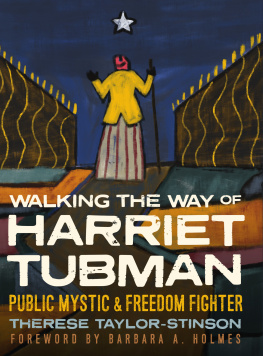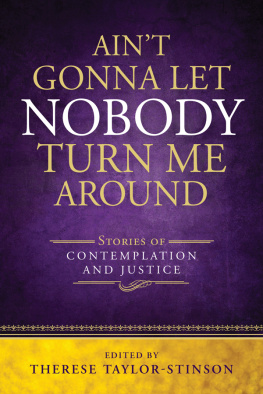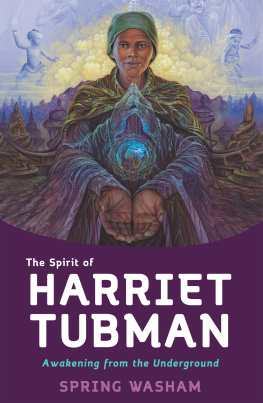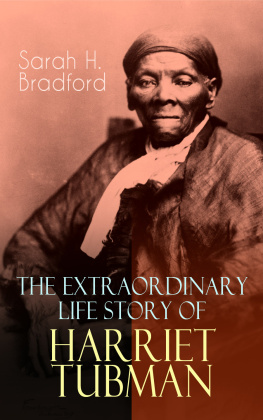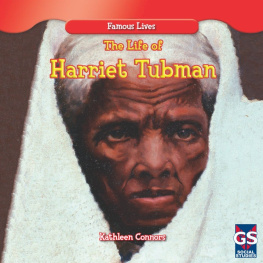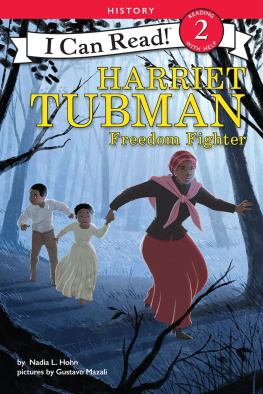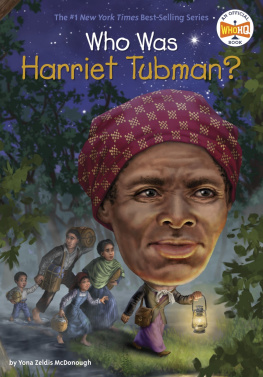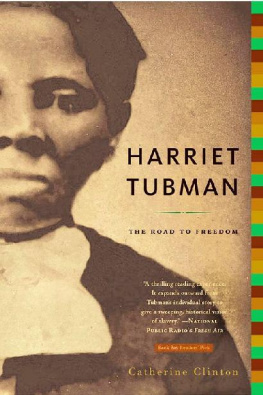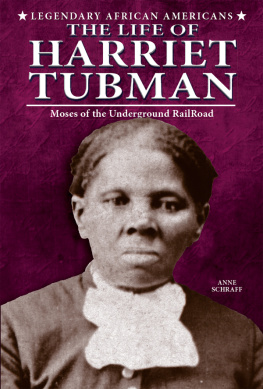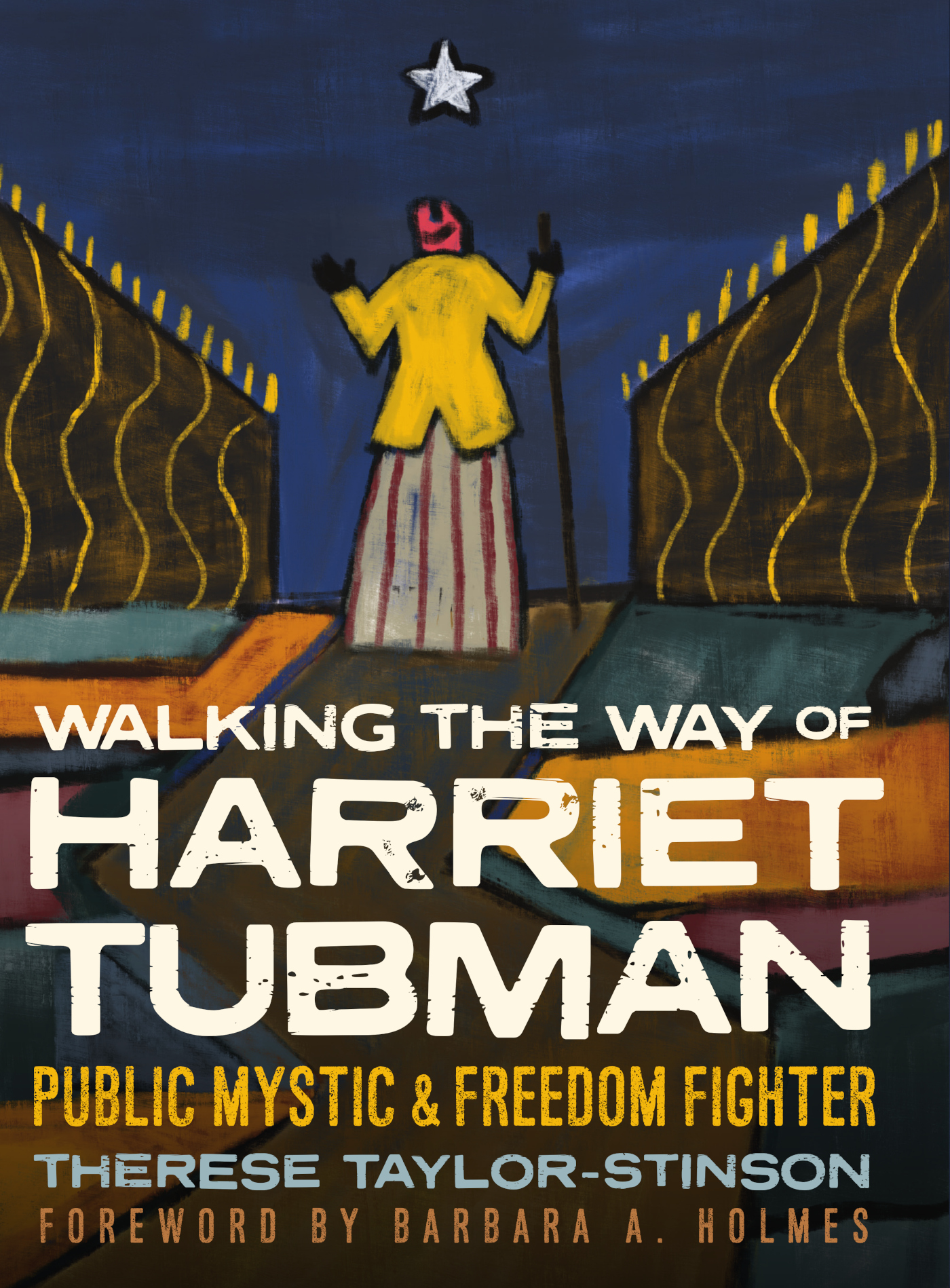
Walking the Way of Harriet Tubman
Walking the Way of Harriet Tubman
Public Mystic & Freedom Fighter
Therese Taylor-Stinson
Foreword by Barbara A. Holmes
Broadleaf Books
Minneapolis
WALKING THE WAY OF HARRIET TUBMAN
Public Mystic and Freedom Fighter
Copyright 2023 Therese Taylor-Stinson. Printed by Broadleaf Books, an imprint of 1517 Media. All rights reserved. Except for brief quotations in critical articles or reviews, no part of this book may be reproduced in any manner without prior written permission from the publisher. Email or write to Permissions, Broadleaf Books, PO Box 1209, Minneapolis, MN 55440-1209.
Scriptures taken from the Holy Bible, New International Version, NIV. Copyright 1973, 1978, 1984, 2011 by Biblica, Inc. Used by permission of Zondervan. All rights reserved worldwide. www.zondervan.com The NIV and New International Version are trademarks registered in the United States Patent and Trademark Office by Biblica, Inc.
Illustration: James Kegley
Print ISBN: 978-1-5064-7833-3
eBook ISBN: 978-1-5064-7834-0
While the author and 1517 Media have confirmed that all references to website addresses (URLs) were accurate at the time of writing, URLs may have expired or changed since the manuscript was prepared.
Contents
Leading from Within
Always remember, you have within you the strength, the patience, and the passion to reach for the stars to change the world.
~meme popularly attributed to Tubman, unsourced
T here is within the human spirit a source of renewal, courage, and ingenuity that equips us to fulfill our purpose here on earth. Howard Thurman refers to this powerful interiority as the sound of the genuine within. This deeply contemplative wellspring strengthens both individuals and entire communities as they seek freedom.
However, seeking freedom is one thing; obtaining freedom is quite another. If freedom was a stationary goal, we would have reached it long ago. Therese Taylor-Stinson, in Walking the Way of Harriet Tubman: Public Mystic and Freedom Fighter, reminds us that freedom is a spiritual state of being that shape-shifts from generation to generation.
Those who lead us toward that elusive state of being must also be led by Spirit. We have known Harriet Tubman as a freedom fighter and abolitionist, whose exploits and courage are highlighted every Black History Month. Taylor-Stinson affirms Tubmans status as a freedom fighter but awakens us to her role as a public mystic and spiritual exemplar.
When I was growing up, most of the mystics that I was introduced to were of European lineage. Although their messages of faith, personal salvation, and the love of God continue to bless me to this day, I needed more. I needed leadership that lifted and protected the community; I wanted to see women and men who looked like me leading freedoms charge. This book fulfills that need.
In Joy Unspeakable, I refer to public mystics as leaders who embody the ineffable while attending to the ordinary, those who host the transcendent, the mystical, and the mundane while engaged in pragmatic justice-seeking acts.
Public mystics are peculiar people. Harriet was no exception. With her brain injury, she had an additional weight of struggles but trusted in God. God brought visions in the trances that resulted from the injury, pointing her to safety and freedom.
Whether you are leading escaping Africans toward the Ohio River or filming the murder of George Floyd in real time, you are relying upon the Divine One and not your own resources to sustain and protect you.
But what does that mean? It may mean that in times of trouble, we enter the fray led by choirs and public mystics rather than the military and that we rely on a living God for ultimate outcomes. So where are the public mystics when you need them most?
I see them in the peaceful resistance of another generation of freedom fighters. They are with us in the stories told and retold of lives well lived. They are in our prophetic imaginations as we welcome Harriet into our present reality. Her counterintuitive leadership empowered by dreams and trances confronts the delusion of empires that they have ultimate control.
As renowned biblical scholar Walter F. Brueggemann often said during Old Testament theology classes, God has other ideas about that.
If we are willing to follow unlikely leaders, public mystics, and a crucified Messiah from the hood (Can anything good come out of Nazareth? John 1:46), if we are willing to forsake the managed reality of empire, then anything is possible. Harriet Tubman speaks into our lives through the particularities of her own suffering as an African American woman born into slavery and the oppression of her community.
But she is no longer confined by racial mythologies to one community or another. Instead, she bears witness that spiritual freedom is possible for all who are marginalized and oppressed. Cant you see her? I can see her now, small of stature, big of heart, running for free. She is running past her fears and ours, her exhaustion and ours.
As she traverses rivers to avoid the slave hunters and dogs, she keeps an eye on the North Star and reflects on the wonder of the Creator/trix. Although she dies of natural causes in peace and a modicum of freedom, in my minds eye, she is running still, encouraging us, all of us, to go on and see what the end is going to be.
Rev. Barbara A. Holmes, JD, PhD
President Emerita
United Theological Seminary of the Twin Cities
Core Faculty
Center for Action and Contemplation
A s I stood on the bank of the Choptank River in Dorchester County, Maryland, one early spring afternoon, in a single line across the sand with other pilgrims on this Tubman journey, I was in awe of the flickers of light reflecting off the water from the noonday sun. Holding sweet gum pods in our bare hands, reflecting on the joy and pain the enslaved endured, we imagined them running barefoot with the abundance of sweet gum under their feet. Through the woods to the river, Harriet was leading them to freedom. We walked to the bank of the river and poured libation as we named our personal ancestors, Mama Harriet among them.
Then we fell silent. In that silence, the wind picked up strength, blowing a soft but forceful presence in our direction. I couldnt help but believe that Harriet and others we named were before us, welcoming our presence. Slowly, the forceful breeze ceased. I turned with wide eyes to our guide, who stood next to me, and he nodded confirmation. No words. But he knew and I knew we had been visited by our ancestors. This was a mystical experience I will never forget. Now even closer to me are Mama Harriet and her treks to freedom.
F rom childhood to adulthood, as she blended the Indigenous mystical traditions passed down through her African ancestors with her Christian faith, Harriet Tubmans spiritual development throughout her life was primary to her becoming and making her worthy of the title mystic. By mystic, I mean a person who dwells mentally and internally in the spiritual realm, one who seeks by contemplation and self-surrender unity with the Divine and who believes in and adheres to the spiritual apprehension of truths whose source is beyond mere intellect. There are hardly any Black Americans formally named as mystics, but a few across history include Sojourner Truth, Jarena Lee, Zora Neal Hurston, Toni Morrison, Alice Walker, Howard Thurman, Martin Luther King Jr., Jeremiah Wright, William Barber, Traci Blackmon, and I am sure a host of unnamed and perhaps unknown others. Malcolm X is one I would identify as an Islamic public mystic. None, however, rise to the title more than Mama Harriet, deserving recognition among the greatest of mystics. This book endeavors to honor her with that distinction by focusing on her spiritual life and allowing her voice to speak afresh to those who may be enslaved by systems, cultures, and ideas today that create blocks and the inability to know and be true to the image bearers they were called to be. Harriet still has the power to lead us to freedom.
Next page
